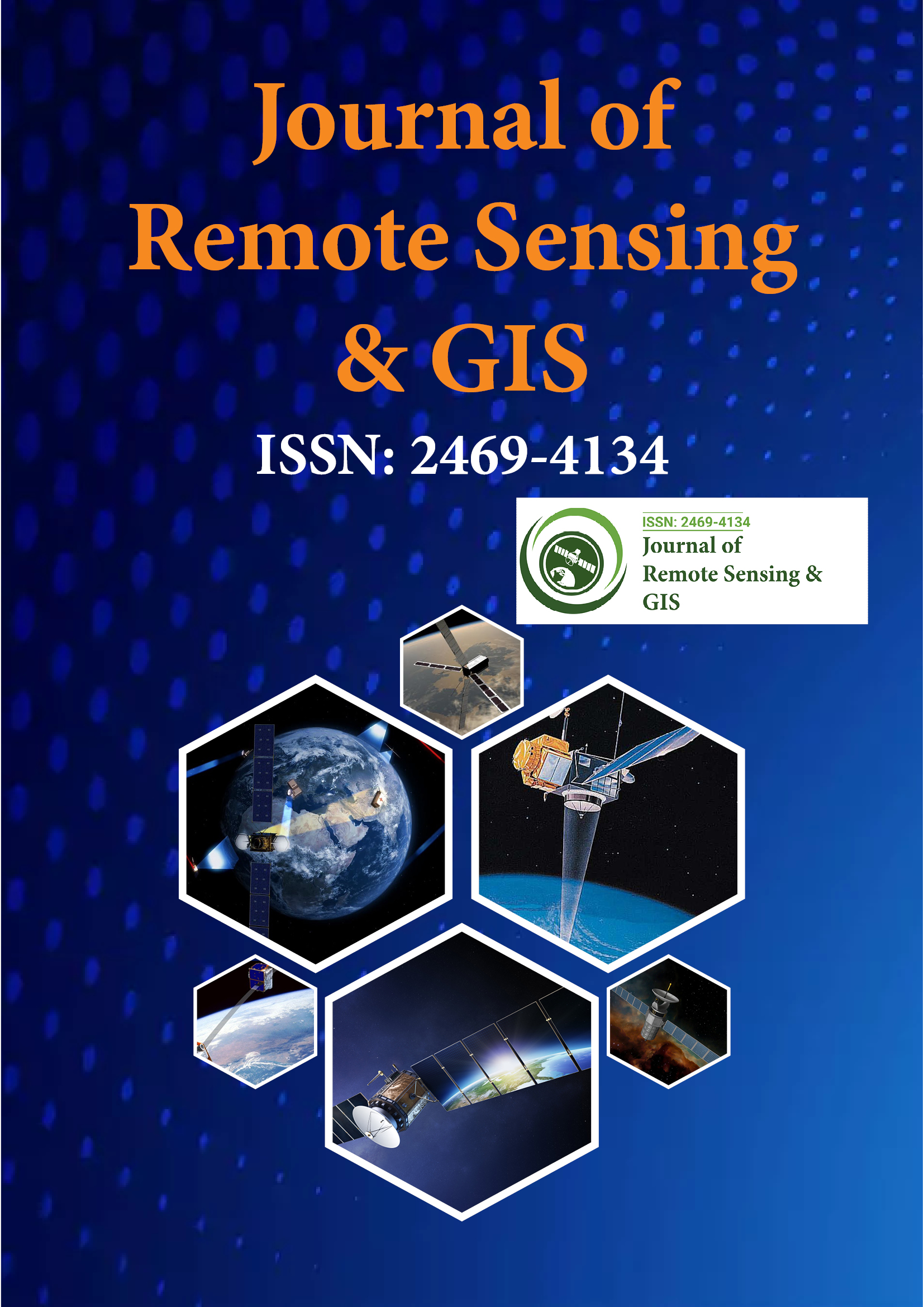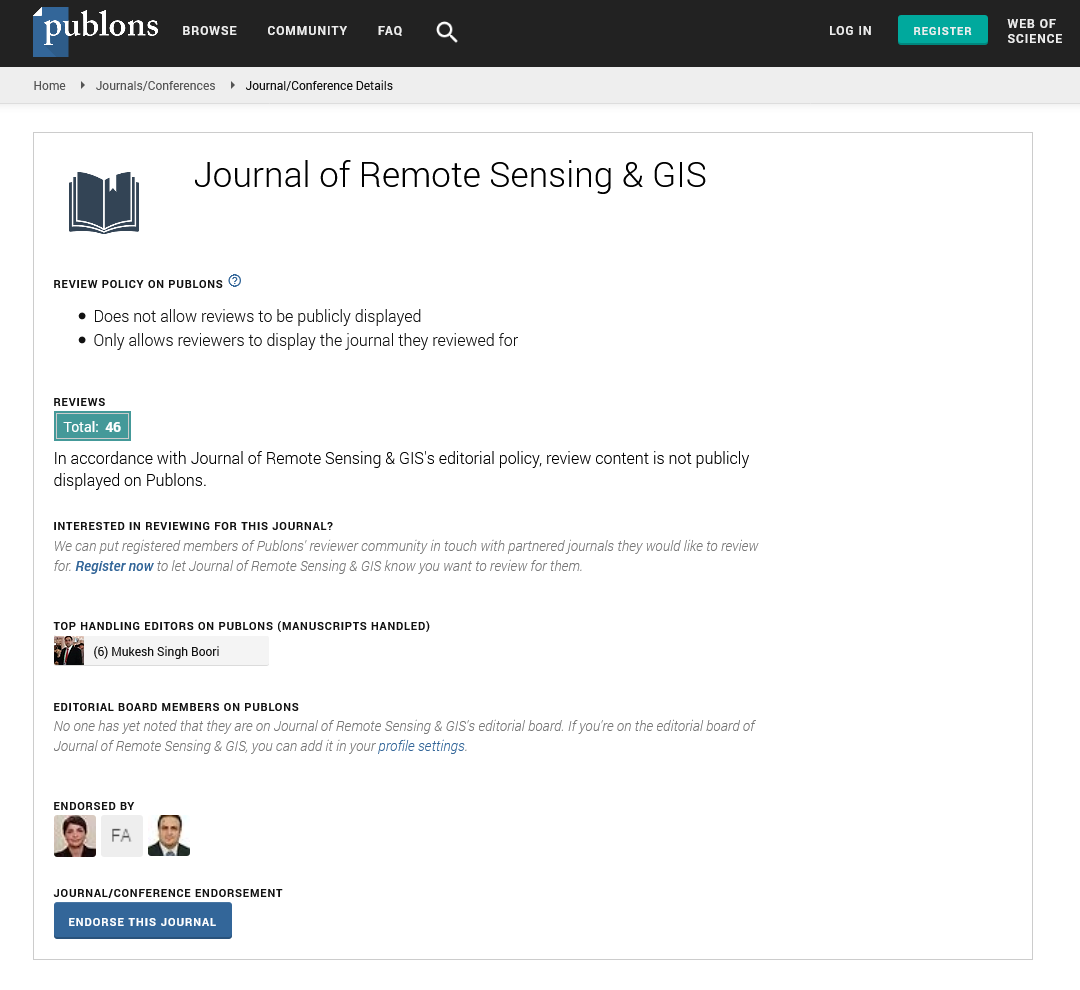Indexed In
- Open J Gate
- RefSeek
- Hamdard University
- EBSCO A-Z
- OCLC- WorldCat
- Publons
- International Scientific Indexing
- Euro Pub
- Google Scholar
Useful Links
Share This Page
Journal Flyer

Open Access Journals
- Agri and Aquaculture
- Biochemistry
- Bioinformatics & Systems Biology
- Business & Management
- Chemistry
- Clinical Sciences
- Engineering
- Food & Nutrition
- General Science
- Genetics & Molecular Biology
- Immunology & Microbiology
- Medical Sciences
- Neuroscience & Psychology
- Nursing & Health Care
- Pharmaceutical Sciences
Opinion Article - (2024) Volume 13, Issue 4
Vegetation Change Detection: Remote Sensing Applications in Environmental Monitoring
Yoshin Xuan*Received: 25-Nov-2024, Manuscript No. JGRS-24-28065; Editor assigned: 27-Nov-2024, Pre QC No. JGRS-24-28065 (PQ); Reviewed: 12-Dec-2024, QC No. JGRS-24-28065; Revised: 20-Dec-2024, Manuscript No. JGRS-24-28065 (R); Published: 27-Dec-2024, DOI: 10.35248/2469-4134.24.13.365
Description
Vegetation plays a fundamental role in maintaining ecological balance, influencing climate regulation, carbon sequestration and biodiversity. Monitoring changes in vegetation is essential for understanding environmental dynamics, assessing the impacts of human activities and planning conservation efforts. Remote sensing technology has emerged as an indispensable tool for detecting and analyzing vegetation changes, offering comprehensive spatial and temporal insights.
Remote sensing refers to the acquisition of information about the Earth's surface using sensors mounted on satellites, drones, or aircraft. These sensors capture data across various spectral bands, allowing for the analysis of vegetation health, extent and changes over time. Two primary types of remote sensing technologies employed in vegetation monitoring are optical and radar systems.
Optical remote sensing relies on the detection of reflected sunlight in visible, near-infrared and shortwave-infrared bands. This approach enables detailed observation of vegetation characteristics such as chlorophyll content, biomass and canopy cover. On the other hand, radar remote sensing uses microwave signals, which penetrate cloud cover and provide reliable data regardless of weather conditions, making it suitable for tropical and cloudy regions.
Methods for vegetation change detection
Some of the methods for vegetation change detection are:
Normalized Difference Vegetation Index (NDVI): The NDVI is one of the most widely used indices for detecting vegetation changes. It is calculated using the red and near-infrared reflectance captured by optical sensors. Higher NDVI values indicate healthy vegetation, while lower values suggest stress, degradation, or the absence of vegetation. NDVI time-series data help track seasonal and long-term trends in vegetation dynamics.
Enhanced Vegetation Index (EVI): EVI improves upon NDVI by reducing the effects of atmospheric scattering and soil background. It provides a more accurate measure of vegetation in regions with high biomass or dense canopies. EVI is particularly useful for monitoring forests and agricultural areas.
Change detection algorithms: Various algorithms, such as image differencing, classification-based approaches and machine learning models, are applied to detect vegetation changes. Image differencing involves comparing pixel values from two or more time periods to identify areas of change. Classification-based methods use supervised or unsupervised techniques to categorize land cover types, highlighting transitions in vegetation cover. Machine learning algorithms further enhance accuracy by integrating additional data sources and capturing complex patterns.
Applications of vegetation change detection
Vegetation change detection applications includes:
Deforestation and forest degradation: Deforestation is a major contributor to biodiversity loss and climate change. Remote sensing provides a systematic approach for tracking deforestation and forest degradation at various scales. High-resolution satellite imagery, such as that from Landsat and Sentinel missions, allows for the identification of logging activities, agricultural expansion and infrastructure development.
Agricultural monitoring: Remote sensing technology supports the evaluation of crop health, yield forecasting and effective management of agricultural resources. By analyzing vegetation indices, farmers can detect stress caused by pests, diseases or water scarcity. This information supports precision agriculture practices, optimizing irrigation and fertilization to improve productivity and sustainability.
Urban expansion and vegetation loss: Urbanization often leads to significant vegetation loss and habitat fragmentation. Remote sensing facilitates the quantification of green space reduction and its impact on urban ecosystems. Time-series analysis of high- resolution imagery helps planners identify trends and design mitigation measures to preserve urban greenery.
Climate change studies: Vegetation is highly sensitive to climate variations, including changes in temperature, precipitation and carbon dioxide levels. Remote sensing data contributes to understanding these impacts by revealing shifts in vegetation phenology, such as altered growing seasons or tree-line migration. This information is valuable for developing adaptive strategies to address climate challenges.
Disaster assessment and recovery: Natural disasters such as wildfires, floods and hurricanes often result in widespread vegetation damage. Remote sensing provides timely information on the extent and severity of these events. Post-disaster assessments help prioritize recovery efforts, monitor ecosystem regeneration and evaluate the effectiveness of restoration initiatives.
Conclusion
Vegetation change detection, using advanced remote sensing technologies, plays a significant role in environmental monitoring. By combing tools such as NDVI, EVI, and advanced change detection algorithms, remote sensing enables precise tracking of vegetation dynamics across diverse ecosystems. The applications span critical areas, including deforestation monitoring, agricultural productivity enhancement, urban planning, climate change adaptation, and disaster recovery. These insights not only about understanding of ecological changes but also inform strategic interventions to preserve biodiversity and minimize the environmental impacts of human activities.
Citation: Xuan Y (2024). Vegetation Change Detection: Remote Sensing Applications in Environmental Monitoring. J Remote Sens GIS. 13:365.
Copyright: © 2024 Xuan Y. This is an open-access article distributed under the terms of the Creative Commons Attribution License, which permits unrestricted use, distribution and reproduction in any medium, provided the original author and source are credited.

